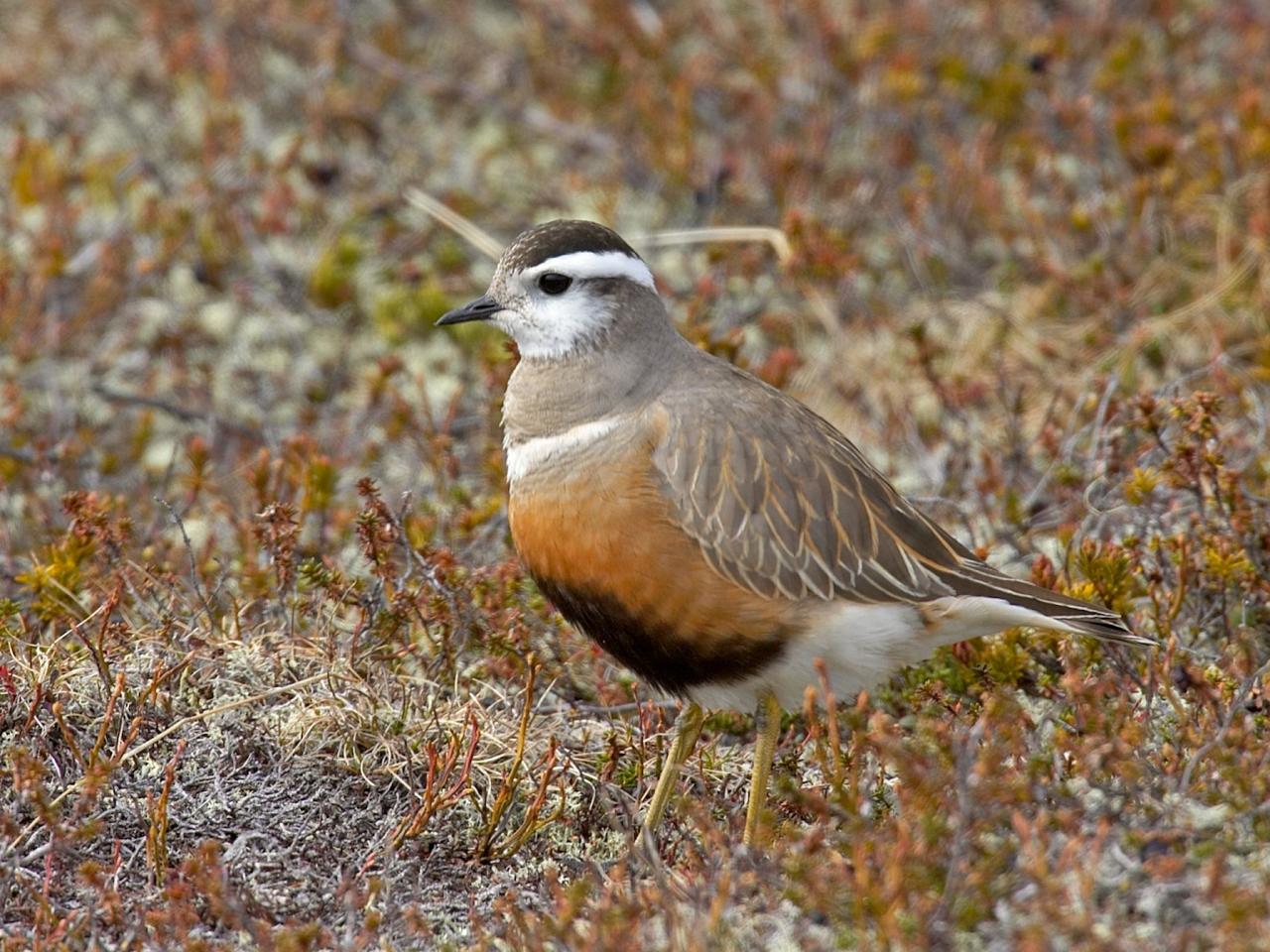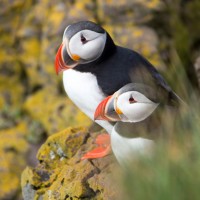- Overview
- Full Itinerary
- Photo Gallery
- Costing
- Travel Details
- Trip Reports
- Guide
- Map
- Know Before You Go
- Other Trips You May Like
Join us on this wildly popular Naturalist Journeys tour to Finland and Norway at the height of spring bird activity in the far north of Europe! This tour offers opportunities to observe a wonderful collection of Arctic and boreal birds, including Great Gray and Boreal Owl, Red-flanked Bluetail, Siberian Jay, Black Grouse, Western Capercaillie, and so many more.
We begin in Finland, the land of 180,000 lakes. Here, the glaciers were thicker and lasted longer during the last Ice Age than elsewhere in Europe, leaving a mostly flat landscape with few hills, a large number of lakes, and relatively thin soils. Although the endless forests of pine, spruce, and birch might seem monotonous at first glance, they are actually subtly beautiful upon closer inspection. These ancient and fantastical forests and bogs harbor thick carpets of colorful mosses and lichens, gnarled and weathered pines and spruce, and sunny edges decorated in wildflowers—the westernmost edge of the Siberian taiga, a part of the world’s largest land biome, the Boreal Forest. A large number of birds take advantage of these forests in spring, including Brambling, Pine Grosbeak, Rustic Bunting, Common Rosefinch, and many more.
Farther north, we head into the land of the midnight sun in the Varanger Peninsula of northeasternmost Norway. This is a land of plenty in late spring for impressive numbers of Arctic seabirds, as well as nesting shorebirds and waterfowl. Thousands of seabirds nest on some of the outlying islands. The rocky coastline also makes for excellent seawatching stops, with scoters, eiders, and loons gathering along the shore.
This tour makes for a great birding and natural history adventure for those who want to experience the Scandinavian Arctic and boreal forests at the height of spring nesting season.




- "This was an outstanding trip with excellent guides who are expert birder/naturalists with great personalities.The itinerary was well planned, the scenery was beautiful and the trip exceeded my expectations in terms of bird species seen and more!" — Paula Pilch, 2023 Traveler
- "Unique opportunity to view three different habitats - boreal forest, tundra, and seacoast. An adventure!" 2023 Traveler
Tour Highlights
- Amazing opportunity to observe and photograph some of the most charismatic owl species in the world: Great Gray, Ural, Boreal, Eurasian Pygmy, and Northern Hawk Owl.
- Discover European shorebird species, such as the wonderful Ruff, in full breeding plumage, displaying on the edges of bogs
- Cross north beyond the Arctic Circle and experience the midnight sun
- Observe Arctic birds in the middle of breeding season, including a wide variety of ducks, loons, and shorebirds such as Yellow-billed Loon and Broad-billed Sandpiper
- Witness the stark beauty of northern Finland and Norway in spring, including a mosaic of bogs, boreal forests, tundra, and fjords
- Visit the northernmost and easternmost geographic points in Scandinavia, including the seabird colonies at Hornøya Island




Trip Itinerary
Itineraries are guidelines; variations in itinerary may occur to account for weather, road conditions, closures, etc. and to maximize your experience.
Wed., June 4 Arrivals
Welcome to Finland! Our guides welcome the group at Oulu Airport in northern Finland. If time allows, we will enjoy some local birding after transferring to our nearby hotel. A good variety of waterfowl and shorebirds occur right around the hotel, including Whooper Swan, Eurasian Wigeon, Tufted Duck, Northern Lapwing, and Eurasian Curlew – a great and easy introduction!
Accommodations at Hotel Airport Oulu in Vihiluoto (D)
Thurs., June 5 & Fri., June 6 Oulu
The boreal forests and wetlands near Oulu brim with birdlife in the spring, turning it into a birder’s paradise for just a brief period in the calendar year as waterfowl, shorebirds, owls, woodpeckers, and grouse take advantage of the seasonal abundance of food to rear their young.
We spend two full days exploring the forests and coastal areas around Oulu, a region known for its healthy populations of Boreal Owls. Although numbers fluctuate from year to year, breeding species include several magical and exceptional species: Great Gray, Ural, Eurasian Pygmy-, Boreal, Short-eared Owl, and maybe even Northern Hawk-Owl. Owl numbers (and their breeding success) depend on the cyclical vole numbers. If vole numbers are high, there might even be Long-eared Owl nesting near Oulu. These forests are home to many other birds as well, and we hope to see up to six species of European woodpecker, Black Grouse, Red-backed Shrike, Crested Tit, and more.
Just south of Oulu, Liminka Bay, an internationally important wetland reserve and home to Finland’s only wetland nature center, hosts a multitude of nesting shorebirds and ducks. Common Goldeneye, Northern Pintail, Common Crane, Northern Lapwing, Ruff, Common Redshank, Little Gull, White-tailed Eagle, Yellowhammer, and Reed Bunting are just a small sample of what we may see nesting here.
Accommodations at Hotel Airport Oulu in Vihiluoto (B,L,D)
Sat., June 7 Oulu to Kuusamo
After a superb couple of days birding around Oulu, we drive eastwards into Lapland towards the town of Kuusamo in the Koillismaa region near the Russian border. We will make several stops along the way, visiting a breeding colony of pretty Little Gulls as well as Smew, a very handsome duck related to the mergansers.
The forests, bogs, and lakes around Kuusamo offer a wealth of grouse, owls, and woodpeckers at this time. Several superb species such as Red-flanked Bluetail and Little Bunting reach their westernmost outposts in Europe here, and we will spend the next couple of days searching for these and many other avian gems.
Accommodations at Hotel Scandic Rukahovi, near Kuusamo (B,L,D)
Sun., June 8 & Mon., June 9 Kuusamo
Kuusamo lies in a region of lovely landscapes and raw natural beauty, where boreal forests of pine and spruce cover approximately ninety percent of the land. Over the next couple of days, we will look for Gray-headed Chickadee, Siberian Jay, Eurasian Three-toed Woodpecker, Willow Ptarmigan, and Black Grouse in these forests, perhaps encountering the turkey-sized Western Capercaillie (largest grouse species in the world) and the often elusive Hazel Grouse as well. In order to reach their breeding sites, we will have an optional hike with one or two steep climbs, the only such walks on this tour which is otherwise on flat terrain.
There are also one hundred and sixty-six lakes dotting this area, providing habitat for nesting Whooper Swan, Red-necked Grebe, Arctic Loon, Common Crane, and other waterbirds. This mosaic of lakes, bogs, and meadows also provides nesting habitat for Bohemian Waxwing, Rustic Bunting, and Common Rosefinch.
These boreal forests are also home to several attractive orchids, including Lady’s-Slipper and Heath Spotted Orchid.
Accommodations at Hotel Scandic Rukahovi, near Kuusamo (B,L,D)
Tues., June 10 Kuusamo to Ivalo
Today, we head north through Lapland crossing the Arctic Circle to the land of the midnight sun – at this time of year the sun remains visible even at midnight. The coniferous forests of mainly pine and spruce give way to landscapes dominated by Mountain Birch as we press northward, making a series of stops at bogland reserves along the way. The edges of these bogs are home to nesting Broad-billed Sandpiper, Reed Bunting, Brambling, and the stunning Bluethroat. We spend the night in the far north of Finland, in the winter sports town of Ivalo.
Accommodations at Hotel Ivalo in Ivalo (B,L,D)
Wed., June 11 Ivalo to Båtsfjord
After breakfast, we continue northward to the northernmost part of mainland Europe through some excellent birding areas. The mosaic of taiga and bog we drive through is very different from the south of the country, with a very different assortment of birds. Our sightings in the morning might include Gray-headed Chickadee, Siberian Jay, Pine Grosbeak, and Brambling, as well as the marvelous sights and sounds of displaying shorebirds in ornate breeding dress – Ruff, Temminck’s Stint, Whimbrel, European Golden-Plover, and more.
After lunch at the Finnish-Norwegian border, we follow the famous salmon river of Teno to the fjords. We stop at the Teno River delta for shorebirds, and the first looks at Common Eider. We then climb uphill, leaving the tree line behind as we gain altitude and go even further north on our adventure. The highlands of Varanger Peninsula offer some absolutely wonderful birding, with Bluethroat and Willow Ptarmigan occupying the river valleys while Lapland Longspur and Long-tailed Jaeger nest on the hillsides. Rock Ptarmigan and Eurasian Dotterel stay on the barren hilltops, while roadside lakes often have nesting Greater Scaup and Long-tailed Duck. The extreme Arctic is truly amazing! Finally, we descend into the quaint fishing port of Båtsfjord – our home for two nights.
Accommodations at Polar Hotel in Båtsfjord (B,L,D)
Thurs., June 12 Båtsfjord
We have a full day to explore the high mountains and northern coast of Varanger Peninsula. With luck, we might even be able to see Snowy Owl and Gyrfalcon in these areas. Along the coast, we keep an eye out for Purple Sandpiper and Black-legged Kittiwake, Parasitic Jaeger and European Shag. We hope to see many of the waterfowl in good numbers, as they gather on their nesting grounds. The landscape provides a starkly beautiful setting.
Accommodations at Polar Hotel in Båtsfjord (B,L,D)
Fri., June 13 & Sat., June 14 Båtsfjord to Vardö
After breakfast, we continue our journey as we drive to Varangerfjord, the easternmost fjord in Norway. This fjord holds impressive numbers of nesting birds this time of year. As we explore the coastline over the next couple of days, we look for Bar-tailed Godwit, Red-necked Phalarope, Red Knot, and Whimbrel nesting in the low tundra while the rich coastal waters harbor Velvet and Common Scoter. If we are lucky, we might even see the rare and spectacular King Eider and Steller’s Eider. White-tailed Eagle often patrol the shorelines for fish and sometimes even an unfortunate duck.
Weather permitting, we will make a half-day excursion by boat on one of these days to the large seabird colonies of Hornøya Island (the easternmost point in Scandinavia). This reserve is home to thousands and thousands of Common and Thick-billed Murre, Razorbill, Atlantic Puffin, European Shag, Black-legged Kittiwake, and Northern Fulmar. The cacophony of thousands of birds and their chicks fill the air, and there should be excellent opportunities for photographing seabirds at close range. A nice walk up to a lighthouse on the highest ridge of the island provides wonderful views over the Barents Sea.
Accommodations at Hotel Vardö in Vardö (B,L,D)
Sun., June 15 Vardö to Ivalo
The tour draws to a close, as we retrace our steps back to Finland after breakfast. We drive along the Varangerfjord, making birding stops along the way to break up the journey. Birds should still be migrating, so we might see some different species on the way back. We enjoy another delicious lunch at the Finnish-Norwegian border before arriving at Ivalo.
Accommodations at Hotel Ivalo in Ivalo (B,L,D)
Mon., June 16 Departures
We catch our homeward flights from Ivalo Airport, full of fresh memories from our natural history and birding trip to Finland and Norway. (B)
Cost of the Journey
Cost of the Journey is $6790 DBL / $7550 SGL, based on double occupancy, per person*. The tour price includes airport transfers, 12 nights’ accommodations, all meals from dinner Day One through breakfast Day 13, professional guide services, park and preserve entrance fees, and miscellaneous program expenses. Cost of the journey does not include airfare from your home to Oulu, Finland or items of a personal nature, such as drinks from the bar, telephone, and local guide gratuities (at your discretion, we will give some guidelines). *All international trips are subject to price adjustment (+ or - ) with significant change in the rate of exchange at the time of final payment. This is a rare situation and you will be notified in advance.
Travel Details
Please plan to make air travel plans only after the minimum group size has been met. We will send you a confirmation email as soon as the trip has been confirmed.
Arrival Airport: Oulu Airport (OUL)
Arrival Details: Plan flights to arrive June 4, 2025 by 6:00 PM if you wish to join the group for dinner
Departure Airport: Ivalo Airport (IVL)
Departure Details: Plan flights to depart June 16, 2025 at your leisure.
Travel Tips: If you arrive early to rest up from your travels, you can book an early night at our first night tour hotel, the Finlandia Hotel Airport Oulu. You can book online and send us the confirmation number, with the goal being you won’t have to switch rooms. The hotel is great for relaxing as they have comfortable rooms and a restaurant and bar on site. If you’re rested up and ready to explore Oulu, there are some fun things to do! The Vihiluoto Birding Tower is a short walk from the hotel and right on the bay. There’s a nice walking path to get there. If you want to venture into town, the University of Oulu Botanical Garden is one of the northern most gardens in the world and has over 4,000 plants. It’s also a good birding spot. It’s about 15 minutes from the hotel and the easiest transportation is a taxi.
Visa: Changes to entrance requirements in Europe are expected in 2025. More information is available at European Travel Information and Authorization System (ETIAS) website.
Browse below for trip reports and species lists from past versions of this and other tours from this destination.
Finland & Norway
- June 2022
- June 2023
- June 2024
Spitsbergen
- June 2022
- June 2024
-
Gerard Gorman

Gerard Gorman is a deeply experienced birding and wildlife guide, particularly in Central and Eastern Europe where his knowledge of the wildlife sites of the region is second to none, having visited every country from the Baltic to the Black Sea. In recent years he has led several Naturalist Journeys groups across Europe and Africa. Gerard is also an author, and his books include Central and Eastern European Wildlife (Bradt, 2008) and Birding in Eastern Europe (WildSounds, 2006). His main ornithological interest focuses on woodpeckers, and he is regarded as an authority, authoring an unprecedented seven books on the family, including the acclaimed Woodpeckers of the World (Bloomsbury, 2014) and Woodpecker (Reaktion, 2017). His latest works include, The Wryneck (Pelagic Publishing, 2022), the definitive monograph on this fascinating species, and The Green Woodpecker (Pelagic Publishing, 2023). Gerard is also interested in wildlife tracking, and his Pocket Guide to Tracks and Signs of European Wildlife (Bloomsbury) was published in 2014.
Photo credit: probirder.com
Other trips with Gerard Gorman
-
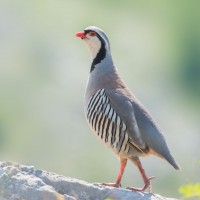 Captivating Croatia: Birding the Adriatic Coast FULL - Check out Romania & Bulgaria: Black Sea Coast Migration!April 8 - 20, 2025
Captivating Croatia: Birding the Adriatic Coast FULL - Check out Romania & Bulgaria: Black Sea Coast Migration!April 8 - 20, 2025 -
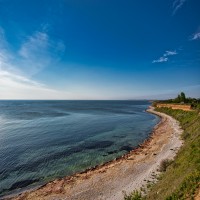 Romania & Bulgaria: Black Sea Coast MigrationSeptember 20 - 29, 2025
Romania & Bulgaria: Black Sea Coast MigrationSeptember 20 - 29, 2025 -
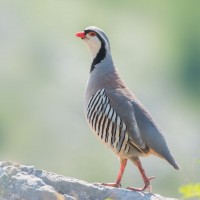 Captivating Croatia: Birding the Adriatic CoastApril 11 - 23, 2026
Captivating Croatia: Birding the Adriatic CoastApril 11 - 23, 2026 -
 Finland & Norway: Birding & NatureJune 4 - 16, 2026
Finland & Norway: Birding & NatureJune 4 - 16, 2026
-
Essential Information +
Pace & Protocols +
Packing List +
Suggested Reading List +
Useful Links +
Photo credits: Hawk Owl, courtesy Finnature; Gray Seal, Taru Suninen courtesy Finnature; Common Crane, Gerard Gorman; Common Sandpiper, Gerard Gorman; Great Spotted Woodpecker, Gerard Gorman; Ruff, Gerard Gorman; Bluethroat, courtesy Finnature; Atlantic Puffin, courtesy Finnature; Bar-tailed Godwit, courtesy Finnature; Finland Scenic, by Taru Suninen; Long-tailed Skua, courtesy of Finnature; Reindeer (cow & calf), courtesy of Finnature; Great Grey Owl, courtesy of Finnature; Finnish Road, by Taru Suninen, courtesy of Finnature; Osprey, courtesy of Finnature; Bar-tailed Godwit, courtesy of Finnature; Dolphin, by Taru Suninen, courtesy of Finnature; Atlantic Puffin, courtesy of Finnature; Reindeer (bull), courtesy of Finnature; Black-throated Diver, courtesy of Finnature; Ruffs, courtesy of Finnature; Dotterel, courtesy of Finnature; Capercaillie, courtesy of Finnature; Common Gull, courtesy of Finnature; Great Gray Owl, courtesy of Finnature; Hawk Owl, courtesy of Finnature; Ruff, courtesy of Finnature; Common Shag, courtesy of Finnature; White-tailed Eagle, courtesy of Finnature; Willow Grouse, courtesy of Finnature; Finland Scenics, courtesy of by Taru Suninen.







